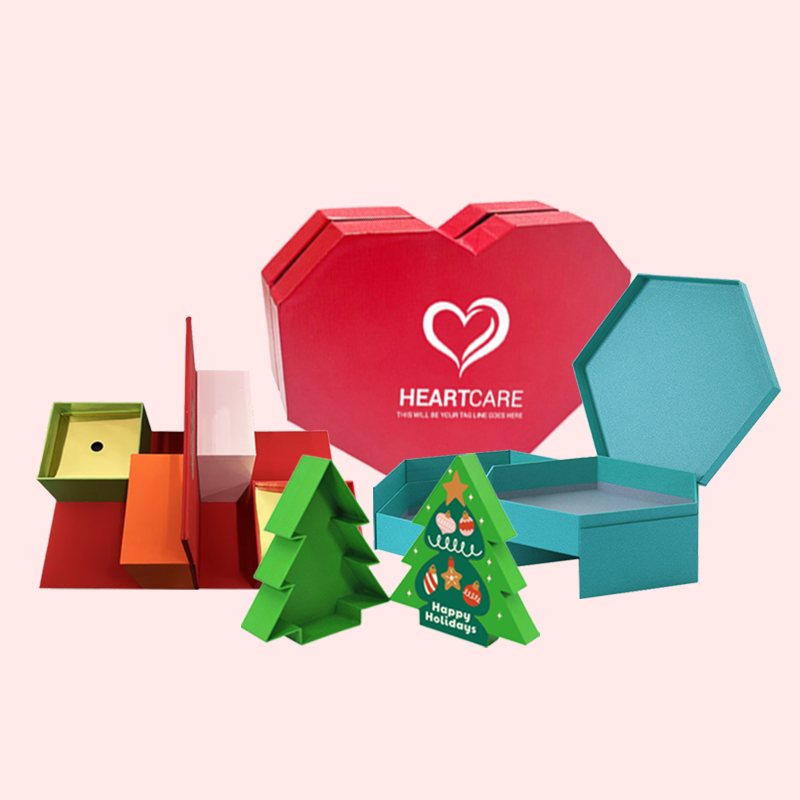Choosing a packaging partner can be daunting. A poor choice leads to delays and quality issues, hurting your brand. Here is how to find the right company for your needs.
To choose a custom packaging company1, look for proven reliability2, strong design capabilities3, deep material knowledge4, and high-quality production5. They must have excellent communication skills6 and a clear understanding of your brand's specific goals to be a true partner in your success.

Choosing a supplier is about more than just comparing prices on a list. It is about finding a partner who understands your vision and can bring it to life flawlessly. To make the best choice, you need to know what to look for and what questions to ask. Let's break down the essential elements you should consider to ensure you find a company that will help your product shine and your business grow.
What are the criteria for selecting packaging?
You have a great product, but the packaging options are overwhelming. Choosing the wrong style or material can risk product safety7 and fail to attract customers. Focus on these key criteria.
The main criteria for selecting packaging are protection, cost, brand alignment8, and sustainability. Your packaging must keep the product safe, fit the budget, reflect your brand's identity, and meet modern environmental standards for a truly successful outcome.
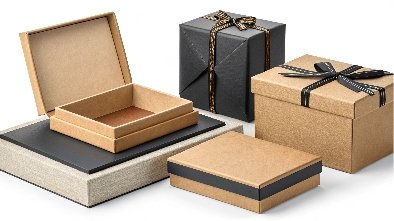
In my 16 years in this industry, I have seen that the best packaging choices always balance four key things. Let’s look at them using a common material: the paper box.
Protection First
The primary job of any package is to protect what's inside. Paper boxes do a great job for many products like cosmetics, electronics, and food items. They offer a good cushion against bumps and scrapes. However, they have limits. They are not waterproof, so if your product is sensitive to moisture, a simple paper box alone is not enough. Also, for very heavy items, you might need a stronger material or a specially reinforced box structure. The first question I always ask a client is, "What journey will your product take?"
Cost and Convenience
Cost is always a major factor. Paper boxes are generally inexpensive to produce. They are also lightweight and can be shipped flat, which saves a lot of money on transportation and storage. This makes them a very practical choice for many businesses, from startups to large corporations. You get good value without a huge investment.
Brand Image and Design
Your package is often the first thing a customer sees. A paper box is like a blank canvas. You can print any color, pattern, or logo on it. This high level of customizability allows you to create a strong brand identity and attract customers on a crowded shelf. However, for ultra-luxury goods, some brands feel a paper box isn't premium enough. In those cases, they might use it as a component within a more complex solution, perhaps with a wood or metal element.
Eco-Friendliness
Today, customers care about the environment. Paper is a huge winner here. It is recyclable and biodegradable, making it a much more sustainable choice than plastic. Highlighting that your packaging is eco-friendly can build trust and appeal to a growing market of conscious consumers.
| Criteria | Paper Box Advantages | Paper Box Considerations |
|---|---|---|
| Protection | Good for lightweight items | Not waterproof, limited strength for heavy goods |
| Cost | Low production & shipping cost | Can be damaged if handled poorly |
| Brand Image | Highly customizable, great for printing | May not feel "luxury" enough for some brands |
| Sustainability | Recyclable and biodegradable | Sourcing from certified forests is best |
What are the factors in the choice of packaging design?
A beautifully designed package can still fail. It might look great on screen but be impractical or too expensive to produce. You must consider these practical factors for a successful design.
Key factors for packaging design are the target customer9, brand identity, product needs, and production feasibility10. A good design must balance visual appeal with structural function, cost, and manufacturing realities to ensure it connects with buyers and is practical to make.
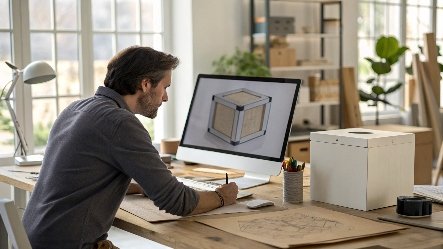
When a designer like Peter starts a project, he is thinking about more than just a pretty box. He is solving a puzzle with many pieces. The final picture must be both beautiful and functional. Over the years, I've learned that the most successful designs are born from a deep understanding of these core factors. A great design partner doesn't just draw; they strategize.
Structural vs. Graphic Design
Many people think "design" just means the colors and logos on the box. That is graphic design11, and it is very important. But just as important is structural design12. This is the physical shape of the box, the inserts that hold the product, and how it opens and closes. I have seen many projects where the graphic design was amazing, but the box was frustrating to open. The user's physical interaction with the package—the unboxing experience13—is part of the design. A good packaging company balances both.
Production Realities
This is where experience really matters. A complex, multi-part design might look incredible as a 3D render, but it could be a nightmare to mass-produce. Every fold, cut, and glue point adds time and cost to the assembly line. A smart designer creates a box that is easy for machines or people to put together quickly and consistently. I always work with my clients and their designers to find small tweaks that can make a design much more efficient to produce without sacrificing the overall look and feel. This bridge between creative design and a manufacturable product is crucial.
Target Audience and Brand
Who is this package for? What do they expect? The design for a children's toy should be bright, fun, and easy for small hands to open. The design for a high-end serum should be elegant, clean, and feel sophisticated. The packaging must speak the same language as your brand and your customer. It’s a silent salesperson. It communicates your brand's values, quality, and personality before the customer even touches the product inside.
What are the things to consider when deciding on the packaging of a product?
You're close to a final decision on your packaging. But overlooking a small detail now can create huge problems later, from shipping damages to products ignored on the shelf.
You must consider the product’s entire journey: production, shipping, retail, and the customer's hands. Focus on durability, budget, the unboxing experience13, and how it clearly communicates your brand message at every single step.
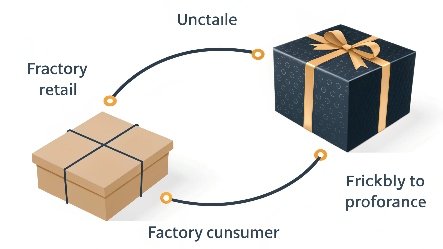
Deciding on packaging isn't a single choice. It is a series of choices that affect your product at every stage of its life. I always encourage my clients to walk through the entire journey in their minds, from the factory floor to a customer's home. Thinking about the whole process helps avoid costly mistakes and creates a much better final product. Let's look at the key stages to consider.
The Supply Chain Journey
How will your product get from where it’s made to where it’s sold? It will be put in master cartons, stacked on pallets, loaded onto trucks, and stored in warehouses. Your packaging has to survive all of that. Paper boxes are great for stacking, but they need protection from rain and humidity. Does your product need an inner wrap? Does it need a sturdier outer shipping box? I’ve seen clients try to save a few cents on their product box, only to lose dollars on products damaged in transit. We have to plan for the roughest part of the journey.
The Retail Environment
Now, imagine your product on a store shelf. It is sitting next to dozens of competitors. How does it stand out? Is the brand name clear? Can customers quickly understand what the product is? This is where graphic design11 plays a huge role. The colors, fonts, and images must grab attention and communicate value instantly. You have about three seconds to make an impression. The packaging has to work hard in that short time.
The Unboxing Experience
The journey is not over when the customer buys the product. In fact, a new and very important part begins: the unboxing. People love sharing this experience online. Is your package easy and satisfying to open? Or is it a frustrating struggle? Does it feel special inside? A simple paper box can be elevated with a custom insert, a small thank-you note, or a clever folding mechanism. This final touchpoint solidifies the customer's good feeling about their purchase and your brand.
What considerations should be made for your packaging design?
Your design is almost ready for production. But have you thought about legal text, future product versions, or your sustainability story? Review these final details before you approve the design.
Beyond aesthetics, consider legal requirements14 like barcodes, scalability15 for future products, and your sustainability16 message. These practical details ensure your design is effective, compliant, and ready for long-term growth and success.
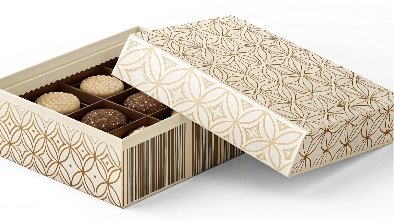
After settling on the core design, we need to zoom in on the finer details. These might seem small, but they are critical for business success and can save you a lot of trouble down the road. In my experience, forgetting these final steps is a common mistake that can be easily avoided with a simple checklist. Think of this as the final quality check before your design goes to the presses.
Legal and Information Requirements
This is the non-glamorous but absolutely essential part of packaging design. Depending on your product and where you sell it, you may need to include specific information. This can include barcodes (UPC or EAN), ingredient lists, nutritional facts, safety warnings, country of origin, or regulatory symbols. Forgetting a required element can get your product rejected by a retailer or held up at customs. A good packaging partner should be aware of these requirements and ensure your design has allocated space for them from the start.
Scalability and Flexibility
Think about the future of your product line. Will you launch a new scent, a different color, or a larger size? A great packaging design is created as part of a system. The core design should be flexible enough to adapt to these variations easily, creating a cohesive look across all your products. For example, you can use the same box structure but change the printed color or a small label. Planning for this scalability from the beginning will save you immense time and money when you expand your offerings. It makes your brand look more professional and organized.
Your Sustainability Story
If you have chosen an eco-friendly material like recycled paper, you should tell that story. This is a valuable part of your brand identity. You can do this by printing a small recycling logo or a short message on the box, like "This box is made from 80% recycled materials and is 100% recyclable." This simple communication does two things: it informs the customer how to dispose of the package responsibly, and it builds brand trust by showing that you care about your environmental impact. It turns a material choice into a powerful marketing message.
Conclusion
Choosing the right packaging company involves looking at their expertise, design process, and production quality. This ensures your final package is effective, on-brand, and successful from factory to customer.
-
Discover essential qualities to ensure your packaging partner aligns with your brand's vision and needs. ↩
-
Learn how to evaluate a supplier's track record to avoid delays and quality issues. ↩
-
Explore what makes a packaging design partner effective in bringing your vision to life. ↩
-
Understand how material expertise can enhance product safety and appeal. ↩
-
Find out the key indicators of quality production that ensure your packaging meets standards. ↩
-
Discover the importance of clear communication in achieving successful packaging outcomes. ↩
-
Learn how to choose packaging that protects your product during its journey. ↩
-
Learn how aligning packaging with your brand identity can enhance customer perception. ↩
-
Discover strategies to define your target audience and tailor your packaging accordingly. ↩
-
Learn about the practical considerations that ensure your design can be efficiently produced. ↩
-
Learn how visual elements can enhance brand recognition and customer engagement. ↩ ↩
-
Explore the importance of structural design in creating functional and appealing packaging. ↩
-
Understand how the unboxing experience can influence customer satisfaction and loyalty. ↩ ↩
-
Understand the essential legal elements to include in your packaging to avoid compliance issues. ↩
-
Discover how planning for scalability can save time and costs as your product line grows. ↩
-
Explore the growing importance of eco-friendly packaging in attracting conscious consumers. ↩


